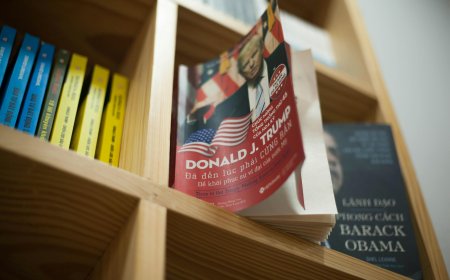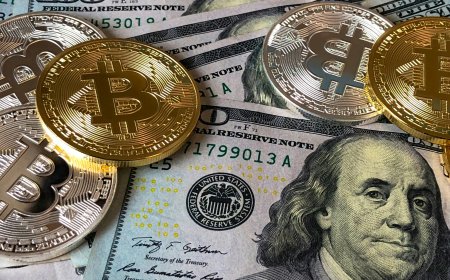Intel Stock: Can INTC Regain Its Silicon Crown?
Intel’s stock faces a pivotal moment as the chip giant fights to reclaim leadership in AI and semiconductors. Can INTC rebound?

For decades, Intel was synonymous with cutting-edge chips. The “Intel Inside” sticker on a laptop carried weight, symbolizing trust in computing power. But in recent years, the once-undisputed king of semiconductors has struggled to keep pace. Rivals like AMD and Nvidia have surged ahead in innovation and investor confidence, leaving many to wonder: Can Intel stock (INTC) mount a comeback, or is its golden era behind it?
The question is more than financial—it’s about the future of technology itself. From artificial intelligence to data centers and defense, Intel’s relevance will shape how the digital economy evolves.
The Rise and Stall of an Icon
Founded in 1968, Intel became the heartbeat of Silicon Valley. Its microprocessors powered the personal computer revolution and gave rise to a tech empire that seemed unshakable. For years, its dominance in PC and server chips fueled growth and strong stock performance.
But around the mid-2010s, cracks began to show. Manufacturing delays, missed deadlines, and an inability to transition to smaller, more efficient chips allowed competitors to grab market share. AMD reinvented itself with its Ryzen and EPYC processors, while Nvidia became the face of the AI revolution with its graphics processing units (GPUs).
For investors, this wasn’t just a stumble—it was a warning sign. Intel stock, once a Wall Street darling, started losing its shine.

Where INTC Stock Stands Today
In 2025, Intel finds itself at a crossroads. The company remains a semiconductor giant, with revenue streams across:
- PC processors – still the largest share of global desktops and laptops.
- Data center chips – though increasingly challenged by AMD and Nvidia.
- Foundry services – a bold push to manufacture chips for other companies.
- AI and defense contracts – new growth bets that could redefine its future.
Intel’s financials reflect a company in transition. Margins have thinned, R&D spending has surged, and investors are split between seeing it as a turnaround play or a value trap.
Intel’s AI Gamble: Too Late or Just in Time?
The biggest question for investors is whether Intel can compete in the booming AI market. Nvidia has already established itself as the undisputed leader, with its GPUs powering everything from ChatGPT to autonomous vehicles.
Intel is betting on:
- Gaudi AI chips – designed to challenge Nvidia’s dominance.
- Custom silicon for enterprises and governments.
- Partnerships with cloud giants to secure relevance in the AI supply chain.
Yet skepticism remains. Can Intel, with its slower track record in innovation over the past decade, realistically claw back significant market share? Or will AI remain a two-horse race between Nvidia and AMD, leaving Intel on the sidelines?
The Foundry Ambition: America’s Answer to Taiwan?
Perhaps Intel’s most transformative bet is its Integrated Device Manufacturing 2.0 (IDM 2.0) strategy. The goal? To build world-class foundries in the United States and Europe that can rival Taiwan Semiconductor Manufacturing Company (TSMC).
This ambition isn’t just about profit—it’s geopolitical. With tensions in the Taiwan Strait raising concerns about supply chains, Washington and Brussels are pouring billions into reshoring chip manufacturing. Intel stands to benefit as a national security asset, securing defense contracts and government subsidies.
If successful, Intel won’t just be a chip designer—it will be the backbone of Western semiconductor independence. That could reshape not only its balance sheet but also global power dynamics.
Investor Sentiment: Contrarian Buy or Risky Hold?
Wall Street’s view of INTC is deeply divided:
- The bull case argues that Intel stock is undervalued, trading at lower multiples compared to Nvidia or AMD. Its government backing, strong brand, and diversified revenue make it a contrarian opportunity for patient investors.
- The bear case warns that Intel is structurally behind in technology. Rebuilding manufacturing leadership will take years, during which rivals will continue pulling ahead. AI adoption may bypass Intel altogether.
For investors, this creates a high-stakes dilemma. Do you see Intel as a phoenix rising from the ashes—or a titan too slow to adapt?
Storytelling: A Tale of Two Engineers
To understand Intel’s struggle, consider two engineers.
The first, Mark, started his career at Intel in the 1990s. He remembers the company as a place of relentless innovation, where each new processor launch made headlines and competitors scrambled to catch up. For him, Intel was not just an employer but a symbol of American ingenuity.
The second, Sarah, joined the company in 2018. She found a different culture—bureaucratic, cautious, and often bogged down by delays. While still proud to work for a household name, she felt Intel had lost the hunger that once defined it.
Their stories echo the investor dilemma: Is Intel still the visionary force of Mark’s era, or is Sarah’s experience the new reality?
What Could Drive INTC Higher
For Intel stock to rebound meaningfully, several catalysts must align:
- Execution on foundry strategy – proving it can deliver chips on time and at scale.
- Breakthroughs in AI hardware – even modest wins against Nvidia could shift perception.
- Stable PC demand – a return to growth in laptops and desktops would boost earnings.
- Government support – continued subsidies and defense contracts could strengthen balance sheets.
- Restoring culture – innovation-driven leadership that reclaims engineering pride.
If Intel delivers on even half of these, INTC could surprise skeptics.
The Risks Investors Can’t Ignore
At the same time, risks are real and immediate:
- Execution risk – Intel has missed deadlines before; another slip could spook investors.
- Competitive risk – Nvidia and AMD are not standing still.
- Market shifts – as cloud providers build their own chips, Intel could lose clients.
- Capital intensity – billions in foundry spending may weigh on margins for years.
The turnaround story is compelling, but the pitfalls are equally daunting.
Conclusion: A Stock at a Crossroads
Intel stock is not a simple story of decline or resurgence—it’s a test case for whether legacy tech giants can reinvent themselves in an era defined by AI and geopolitical rivalry.
For long-term investors with patience, INTC may represent a high-risk, high-reward opportunity. For others, it may remain a wait-and-watch stock until clearer signs of execution emerge.
One thing is certain: the world is watching. If Intel can rise again, it won’t just be a corporate comeback—it will be a story of resilience at the very heart of the digital age.
FAQs
1. Is Intel stock a good buy right now?
It depends on your risk tolerance. Some see Intel as undervalued, while others worry about execution risks and stronger competition.
2. How does Intel compare to Nvidia and AMD?
Nvidia dominates AI, AMD is strong in CPUs, while Intel remains diversified but is playing catch-up in innovation.
3. What is Intel’s foundry business?
Intel is building manufacturing plants to produce chips for itself and other companies, aiming to rival TSMC and strengthen Western supply chains.
4. Will AI boost Intel’s growth?
Intel is betting big on AI chips, but it faces an uphill battle against Nvidia’s dominance. Success depends on execution and partnerships.
5. What risks should investors watch?
Key risks include missed deadlines, heavy spending on foundries, and losing market share to competitors.
আপনার প্রতিক্রিয়া কী?
 পছন্দ
0
পছন্দ
0
 অপছন্দ
0
অপছন্দ
0
 ভালোবাসা
0
ভালোবাসা
0
 মজার
0
মজার
0
 রাগান্বিত
0
রাগান্বিত
0
 দুঃখজনক
0
দুঃখজনক
0
 বাহ
0
বাহ
0




























































